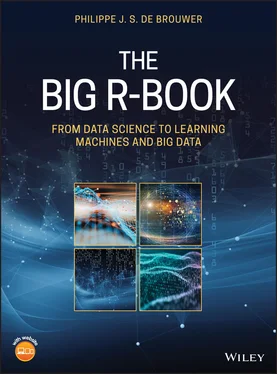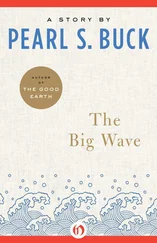1 ...6 7 8 10 11 12 ...48 The same steam engine, however, had another trick up its sleeve: after industrialisation it was able to provide mass transport by the railway. This fuelled a new wave of wealth creation and lasted till the 1900s, where that wave of wealth creation ended in the “Panic of 1901” and the “Panic of 1907” – the first stock market crashes to start in the United States of America. The internal combustion engine, electricity and magnetism became the cornerstones of an new wave of exponential growth based on innovation. The “Wall Street Crash of 1929” ended this wave and started the “Great Depression.”
It was about 1935 when Kondratiev noticed these long term waves of exponential growth and devastating market crashes and published his findings in Kondratieff and Stolper (1935) – republished in Kondratieff (1979). The work became prophetic as the automobile industry and chemistry fuelled a newwave of development that gave us individual mobility and lasted till 1973–1974 stock market crash.
Kondratiev:
The scenario repeated itself as clockwork when it was the turn of the electronic computer and information technology (IT) to fuel exponential growth till the crashes of 2002–2008.
IT information technology:
Now, momentum is gathering pace with a few strong contenders to pull a new wave of economic development and wealth creation, a new phase of exponential growth. These contenders include in our opinion:
quantum computing (if we will manage to get them work, that is),
nanotechnology and development in medical treatments,
machine learning, artificial intelligence and big data.
This book is about the last group: machine learning (statistical learning) and data, and if you are reading it then you are certainly playing a significant role in designing the newest wave of exponential growth. If regulators will listen to scientists 2 and stop using incoherent risk measures in legislation (such as the Basel agreement and UCITS IV), then it might even be the first phase of exponential growth that does not end in a dramatic crash of financial markets.
Working with data is helping a new Kondratiev wave of wealth creation to take off. The Kondratiev waves of development seem to bring us step by step closer to a Type I civilisation, as described by Nikolai Kardashev – (see Kardashev, 1964). Nikolai Kardashev describes a compelling model of how intelligent societies could develop. He recognizes three stages of development. The stages are:
Kardashev:
1 Type 0 society is the tribal organization form that we know today and has lasted since the dawn of the Homo genus.
2 A Type I society unites all people of a planet in one community and wields technology to influence weather and harvest energy of that planet.
3 A Type II society has colonizedmore than one planet of one solar system, is able to capture the energy of a star, and in some sense rules its solar system.
4 A Type III society has a galaxy in its control, is able to harvest energy from multiple stars, maybe even feeds stars into black holes to generate energy, etc.
5 There is no type Type IV society described in Kondratiev, though logically one can expect that the next step would be to spread over the local cluster of galaxies. 3 However, we would argue that more probably we will by then have found that our own species, survival is a legacy problem and that in order to satisfy the deepest self-actualization there is no need for enormous amounts of energy –where Kardashev seems to focus on. Therefore, we argue that the fourth stage would be very different.
While both Kondratiev's and Kardashev's theories are stylised idioms of a much more complex underlying reality, they paint a picture that is recognizable and allows us to realize how important scientific progress is. Indeed, if we do not make sure that we have alternatives to this planet, then our species is doomed to extinction rather soon. A Yellowstone explosion, an asteroid the size of an small country, a rogue planet, a travelling black hole, a nearby supernova explosion and so many more things can make our earth disappear or at least render it unsuitable to sustain life as we have known it for many thousands of years or – in the very best case – trigger a severe mass extinction. 4 Only science will be able to help us to transcend the limitation of the thin crust of this earth.
Only science has brought welfare and wealth, only science and innovation will help us to leave a lasting legacy in this universe.
But what is that “science”?
1 1With “scientific method” we refer to the empirical method of acquiring knowledge based on observations, scepticism and scrutiny from peers, reproducibility of results. The idea is to formulate a hypothesis, based on logical induction based on observations, then allowing peers to review and publish the results, so that other can falsify of conform the results.
2 2See elaboration on coherent risk measures for example in Artzner et al. (1997), Artzner et al. (1999), and De Brouwer (2012).
3 3Dominating the universe has multiple problems as there is a large part of the universe that will be forever invisible, even with the speed of light, due to the Dark Energy and the expansion of the universe.
4 4With this statement we do not want to to take a stance in the debate whether the emergence of the Homo sapiens coincided with the start of an extinction event – that is till ongoing – nor do we want to ignore that for the last 300 000 years species are disappearing at an alarming rate, nor do we want to take a stance in the debate that the Homo sapiens is designing its own extinction. We only want to point out that dramatic events might occur on our lovely planet and make it unsuitable to sustain intelligent life.
♣2♣ The Scientific Method and Data
The world around us is constantly changing, making the wrong decisions can be disastrous for any company or person. At the same time it is more than ever important to innovate. Innovating is providing a diversity of ideas that just as in biological evolution might hold the best suited mutation for the changing environment.
There are many ways to come to a view on what to do next. Some of the more popular methods include instinct and prejudice, juiced up with psychological biases both in perception and decision making. Other popular methods include decision by authority (“let the boss decide”), deciding by decibels (“the loudest employee is heard”) and dogmatism (“we did this in the past” or “we have a procedure that says this”). While these methods of creating an opinion and deciding might coincidently work out, in general they are sub-optimal by design. Indeed, the best solution might not even be considered or be pre-emptively be ruled out based on flawed arguments.
Looking at scientific development throughout times as well as human history, one is compelled to conclude that the only workable construct so far is also known as the scientific method. No other methods haves brought the world so many innovations and progress, no other methods have stood up in the face of scrutiny.
scientific method
Aristotle (384–322 BCE, Greece) can be seen as the father of the scientific method, because of his rigorous logical method which was much more than natural logic. But it is fair to credit Ibn al-Haytham (aka Alhazen—965–1039, Iraq) for preparing the scientific method for collaborative use. His emphasis on collecting empirical data and reproducibility of results laid the foundation for a scientific method that is much more successful. This method allows people to check each other and confirm or reject previous results.
Читать дальше











